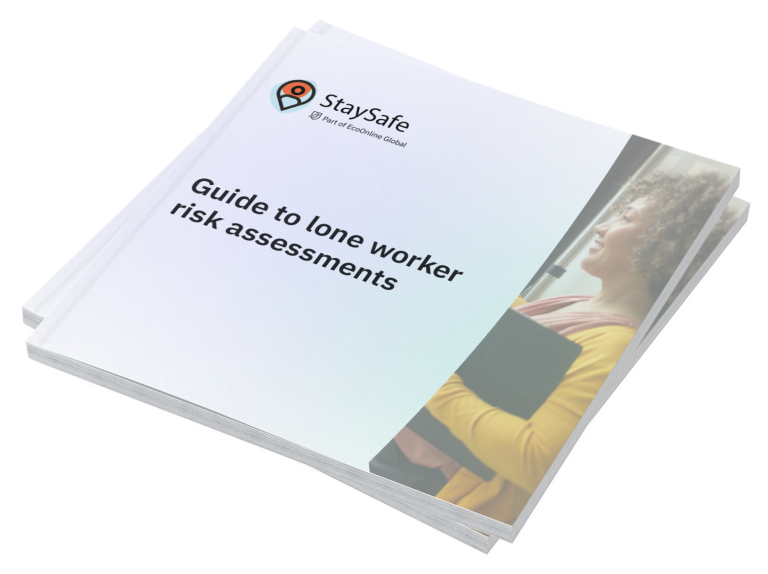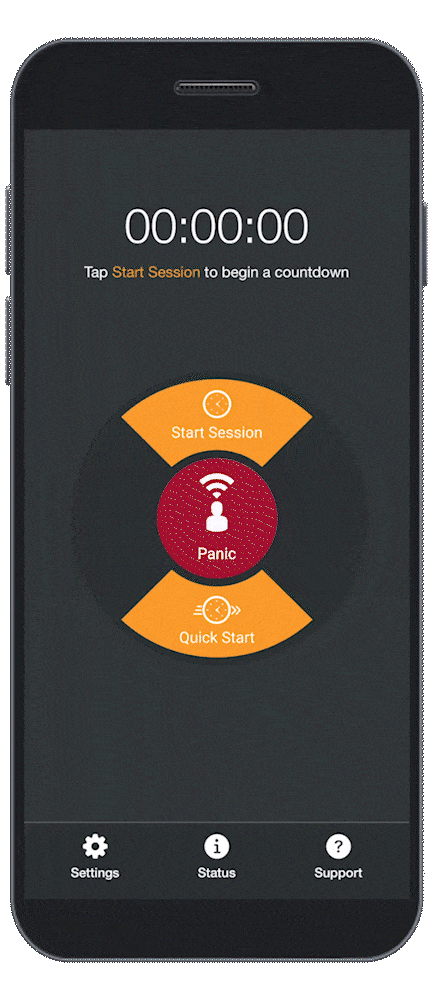Lone working legislation in Australia
First of all, what exactly is lone working?
Lone working is when work activities are carried out without the direct and immediate support of supervisors or colleagues. To put it simply, if an employee cannot be seen or heard by a colleague, they are lone working, whether that is for all or part of their working day.
However, whilst some lone workers – such as a security guard working alone at night – are easy to identify, not all lone workers are obvious. In fact, research indicates that there are millions of hidden lone workers out there – from a surveyor in the corner of a construction site, to a healthcare worker working behind closed doors in a clinic.
Lone workers can be at an increased risk of harm from workplace hazards, as any risks are faced alone. It is therefore important to ensure that any lone workers in your organisation are identified and protected properly.
Lone worker legislation
Lone workers are subject to the same Workplace Health and Safety (WHS) health and safety requirements as all other employees. Lone worker safety is also included in the Occupational Safety and Health Regulations (1996).
The Occupational Safety and Health Act (OHS), along with the Work Health and Safety Act (WHS) are the legislations that govern Work Health and Safety practices in Australia.
Each territory in Australia has its own WHS laws and its own regulator to enforce them. These laws are put in place to ensure the health and safety of your workers and others who come into contact with your business.
Although each state has variations, each territory must adhere to their Occupational Safety and Health Act (OSH) or Work Health and Safety Act (WHS).
The OSH Act applies to Victoria (2004) and Western Australia (1984). A variation of the WHS Act applies to all states except for Victoria and Western Australia, where it is called the Occupational and Health Act (OHS).
What is the law on lone working?
A lone working employee is still subject to all the requirements stated within the WHS and OSH Acts relevant for their state. As working alone can put an employee at higher risk due to not being under direct supervision in an emergency, it is especially important to ensure that any lone workers are risk assessed, provided with adequate safety equipment and communicated with regularly.
Section 3.3 of the Occupational Safety and Health Regulations (1996) requires that:
Isolated employees to have communication for emergencies. If an employee is isolated from other persons because of the time, location or nature of the work then the employer must ensure that —
(a) there is a means of communication available which will enable the employee to call for help in the event of an emergency; and
(b) there is a procedure for regular contact to be made with the employee and the employee is trained in the procedure.
Alongside this, employers should also implement their own regulations to help ensure the safety of their lone workers.
These could include:
- Conducting thorough lone worker risk assessments
- Producing a written health and safety policy and ensuring all employees understand it
- Taking steps to reduce or eliminate risk to create a safe working environment
- Providing information, instructions, lone worker training and supervision where appropriate
- Regularly reviewing and improving upon lone worker risk assessments and policies
What are the main risks and hazards that lone workers face?
According to Safe Work Australia, lone workers may be isolated from help because of where or when they are working, or the nature of the work they are doing.
For example, they may be working in locations or at times where it would be difficult for them to be rescued, get medical assistance or be reached by emergency services. Workers may face additional WHS risks if nobody else is around to help with difficult tasks, alert them to hazards or give a second opinion about how to safely do a task or notice if they are fatigued or making mistakes.
Certain environments also increase the risk to employees, particularly those in which customers may become upset, aggressive or take advantage of a lone worker. Environments where alcohol, gambling and/or money are involved, as well as sensitive social work, can cause sudden mood changes and hostile behaviour.
Utility workers often operate in rural areas, underground or with dangerous machinery and face environmental risks. If an accident were to happen, they may not be able to call for help. Similarly, staff who travel to different locations as part of their role may not be able to notify managers should an accident happen whilst on the road.
In some environments, no matter how stringent the risk assessment or safety measures put in place, the risk is too great to allow for lone working.
So, how can an employer reduce the risk for people who work alone?
Monitoring employees using Lone Worker Apps
Being able to monitor your employee’s whereabouts is extremely important in keeping them safe, as accidents can occur at any time. Regular communications should be maintained with lone working staff and procedures put in place so that employees can quickly communicate with their employer and raise the alarm if needed.
One way to help keep lone working staff safer is to implement a lone worker app, such as StaySafe. Lone worker apps help you to protect and monitor your employees whilst they work, travel or meet with clients alone or in remote locations.
The StaySafe app has a range of functions including a panic button, GPS location, timed sessions, fall detection alerts and welfare check-ins. Employee activity, and the location of staff whilst at work, is monitored via a cloud-based hub, where employers can respond to any alerts, or outsource to external 24/7 monitoring. If an employee fails to check in safely during a lone working session, has an accident, or raises an alert, you can locate them and get help straight away.
If employees are encouraged to use the app daily, health and safety will be at the forefront of their minds whenever they begin work. Lone working apps, such as StaySafe, enable you to fulfil your duty of care to your employees and enhance your reputation as a responsible employer.
Implementing robust health and safety procedures will also communicate a positive message to staff that the organisation is looking out for their safety.
Find out more about how StaySafe can help you protect your lone workers
Are you protecting your lone workers?
Our comprehensive guide covers everything you need to know about lone working.
From identifying the lone workers in your organisation, to the risks they face in different environments, our lone worker guide will ensure you know how to keep your staff protected and meet your legal duty of care.
Yes, review policy
Explore our range of lone worker solutions
See StaySafe in action
- 2 week free trial
- See how employees can use the app to check-in & send alerts
- See realtime updates in the monitoring hub

Don CameronCEO, StaySafe
Don has been leading the growth of StaySafe since 2014, and we are now the leading, global, app-based lone worker solution.
Before coming over to StaySafe, Don built up over 25 years experience developing successful businesses in the IT, Telecoms and service industries.
Passionate about lone worker safety, Don is constantly striving to make sure StaySafe brings the most benefits to lone workers and their employers to keep more people safe.
Guide to Lone Working

A comprehensive lone worker guide for employers, managers and the self employed.
Lone Worker Risk Assessment

Three Questions to Ask When Purchasing a Lone Working Solution

Find out more about StaySafe solutions

Lone Worker App
Our intuitive app allows employees to check in safely following a lone working session and raise an alert in an emergency.

Cloud Based Monitoring Hub

Wearable Technology











